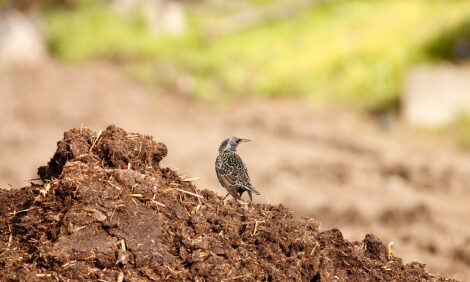



Improved Understanding May End “White Chick” Era
GLOBAL - An increasing number of reports about “white chicks” have emerged from all corners of the chicken-producing world. Some have even called 2016 the “Year of the White Chick” due to the number of references recently made to the condition in scientific meetings and journals.First, says Philip A. Stayer (DVM Corporate Veterinarian Sanderson Farms, Inc.) in an article for Poultry Health Today, let’s clarify what we’re talking about here. “White chicks” are just that — day-of-age broilers with unusually white down, typically intermingled with more normal yellow-colored hatch-mates. They tend to be smaller in stature and less thrifty than other chicks. Upon necropsy, they usually have green livers and large, greenish, under-utilized yolks.
White chicks are typically produced by one hen flock for a period of 2 to 4 weeks, then are seen no more in progeny from that particular flock. They are often associated with reduced hatchability: Up to 40% of fertile eggs set don’t hatch.
Oftentimes, breeder-flock records show some amount of reduced egg production — up to 13% of hen-day production — 3 weeks before white chicks are seen, but sometimes there are no apparent ill effects among the parents. If the worst hatch is combined with the worst egg production, up to 25,000 fewer chicks may be hatched per week from a house of 10,000 hens. This bottom typically lasts only 1 week, but over the course of a typical 2-week incident, could amount to 40,000 fewer broiler chicks from one affected hen house.
Lost embryos
Opening the unhatched eggs during the lowest-percentage hatch shows most of the lost embryos died during the second week of incubation. These embryos tend to have firm, spotty livers. Third-week dead embryos have the same lesions as seen in the unthrifty, hatched white chicks: The livers are green-tinged and there are large, dark-green unabsorbed yolks.
Regardless where in the world white chicks are found, the same microscopic lesions are seen in tissues upon histopathological evaluation. Livers have active inflammation of bile ducts, including the gall bladder itself. The bile ducts tend to be thicker (hyperplasia) than normal. There are pockets of red-blood-cell-forming nests (extra-medullary hematopoiesis) scattered about the liver. Usually some amount of thickened bile is found in the bile ducts, lending to the liver’s green hue.
Astrovirus infection
There is now consensus that white chicks are caused by astrovirus infection. In the past, astroviruses have been incriminated in malabsorption syndromes (“runting stunting syndrome”) and renal disease, and now as a cause of white chicks. Astroviruses are ubiquitous around the chicken-producing world and there are many subtypes. Some of the chicken astroviruses are more genetically related to turkey viruses than other chicken viruses. The white chick astrovirus family appears to be quite diverse.
Although reports of white chicks have increased, they are actually sparse in number compared to other diseases of chickens. White chicks are produced during maternal viral shedding, even if the hen never demonstrates any clinical illness. If hens are naïve to a particular astrovirus and are then exposed for the first time during their reproductive life, they may shed the virus into eggs during a typical 2-week viremia. If hens are exposed to the same astrovirus before they start laying eggs, the virus does not remain in the reproductive tract and that particular astrovirus is not shed. White chicks appear to come from pullet-rearing facilities that are too clean; the same birds are exposed to an astrovirus as mature hens that they never previously encountered.
Recent case
In the southern US, white chicks appear to follow introduction of new males (spike roosters) that are shedding astrovirus into a naive flock. After a recent case of white chicks, serology with Biochek’s CAstV ELISA kit for chicken astrovirus documented a difference between affected hens, their respective pullet sera and the spike male donor-flock sera. In fact, the affected hens’ pullet ELISA titers were remarkably low for the region, while the spike male donor-flock was slightly higher than other flocks in the same grow-out area. The same astrovirus was isolated from tissues taken from the affected hens, embryos and white chicks.
The solution to this particular case was to move litter from chicken-astrovirus ELISA-positive pullet flocks to pullet facilities negative for the virus while the recipient farms’ pullets were sexually immature. After moving litter, astrovirus titers increased in the recipient flock to the level of the surrounding flocks. No more cases of white chicks were seen after sharing resident viral populations.
Still, the question remains as to how much astrovirus is circulating in the commercial broiler industry. A simple test like the Biochek CAstV ELISA kit is a relatively non-invasive measure for determining exposure to astroviruses. If most producers in an area are astrovirus-positive, perhaps there is no need for vaccination.
It’s also possible, however, that as producers heighten sanitation and other measures to control Salmonella, Campylobacter and other pathogens, resident viruses may be displaced. There may be an increasing naïve hen population that would benefit from astrovirus vaccination as immature pullets. If killed vaccines are used, then pullets have to be vaccinated at least two times to induce an amnestic response. If a modified-live vaccine will work, perhaps one exposure will suffice, much like moving litter.
White chicks have been linked to astrovirus infection since 2003. Now that this disease is better understood, interventions can prevent recurrence. Might 2016 prove to be the last “Year of the White Chicks”?









